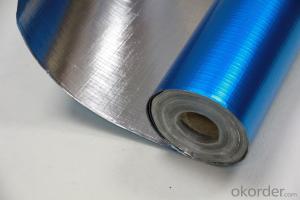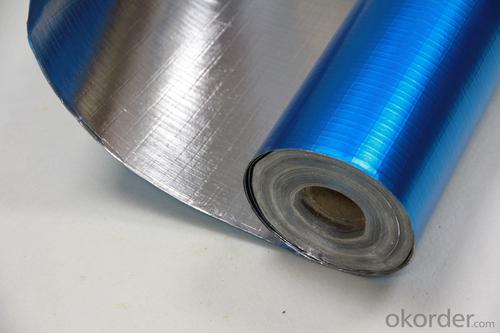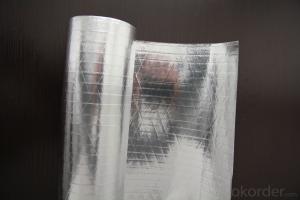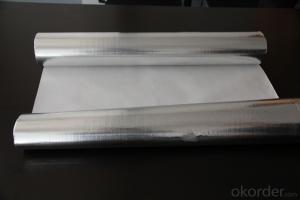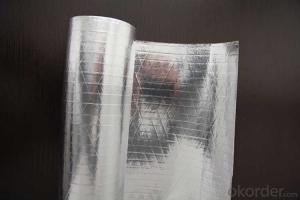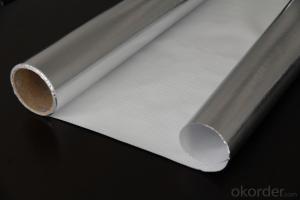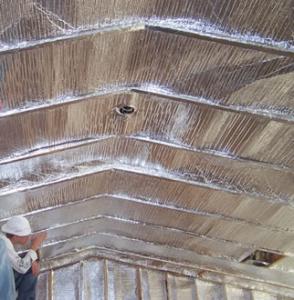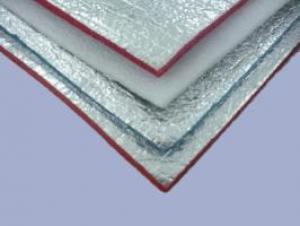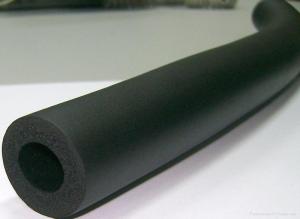Aluminum Foil Facing, Double Sided Paper Foil for Roof Insulation
- Loading Port:
- China Main Port
- Payment Terms:
- TT or LC
- Min Order Qty:
- 5000 m²
- Supply Capability:
- 800000 m²/month
OKorder Service Pledge
OKorder Financial Service
You Might Also Like
Introduction of Aluminum Foil Facing
Aluminum Foil Facing is a kind of film, which is made of by double sided aluminum foil, fiberglass scrim and kraft paper for Roof Insulation, Wall Insulation, Sarking Insulation and Thermal Insulation
Application of Aluminum Foil Facing
Our aluminum foil facing are mainly used as facing for glass wool insulation, rockwool, mineral wool etc. Also aluminum foil facing is used under roof decking, under attic rafters, over existing attic thermal insulation, in floors, walls and crawl spaces, and in industrial and commercial buildings to block radiant heat coming into house through the roof during the summer and retain indoor heat generated during in winter
Advantage of Aluminum Foil Facing
Light weight
• High manufacturing accuracy
• High strength
• Small inertia resistance
• Strong heat dissipation ability
• Good visual effect
• High reflective insulation
• Heat resistant, water proof, stable at high temperature;
• environmentally friendly, no smell and not-toxic;
• Smooth and clear surface;
Packing of Aluminum Foil Facing
1. Waterproof paper then PVC shrinking Film
2. Kraft paper only
3. Woven cloth
4. Kraft paper or Water Proof Film then Metal/wooden pallet
5. (Also as your request. )
Pictures of Aluminum Foil Facing

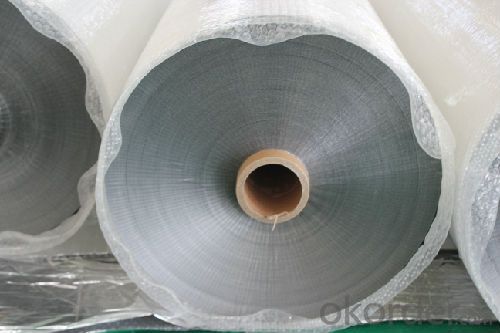
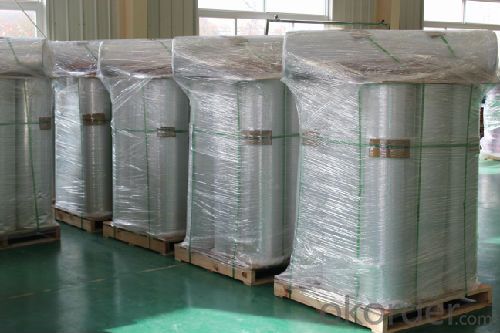
Specification of Aluminum Foil Facing
CONSTRUCTION:
Aluminum foil: 7u / Tri-way fiberglass scrim: 8x12/100mm / Flame retardant adhesive /
Kraft paper: 50gsm / Flame retardant adhesive / Aluminum foil: 7u
TYPICAL PHYSICAL PROPERTIES:
PROPERTIES | UNIT | VALUE | TEST METHOD | |||||
Basic weight | gsm | 110 | ASTM D646 | |||||
Tensile strength: M. D. X. D. | N/25mm | 100 75 | ASTM C1136 | |||||
Burst strength | N | 35 | ASTM D774 | |||||
Reflectivity of foil surface | % | 95 | ---------- | |||||
Remarks:
1. The data above are typical results and subject to change without notice.
2. Tolerance: Weight and Thickness: ±10%; Width: ±3mm;
Length: Cut Roll & Log Roll ±0.3m, Jumbo Roll ±0.5%.
3. The products should be stored at room temperature and kept from wet and heat source.
4. It is essential, as with all pressure-sensitive tapes, that the surface to which the tape is applied must be clean, dry, and free of grease and oil.
5. The user should take test and do trial-application on the above products before coming into application so as to witness and ensure suitability for user’s special purpose and technique.
FAQ
We have organized several common questions for our clients,may help you sincerely:
1. How about your company?
A world class manufacturer & supplier of Aluminum Foil Facing and is one of the large-scale professional investment Aluminum Foil Facing bases in China. Annually more than 1000 containers of Aluminum Foil Facing are exported to markets in Europe, America and Japan.
2. What is the storage condition?
The Aluminum Foil Facing should be stored at room temperature and kept from wet and heat source.
3. How to guarantee the quality of the products?
We have established the international advanced quality management system,every link from raw material to final product we have strict quality test;We resolutely put an end to unqualified products flowing into the market. At the same time, we will provide necessary follow-up service assurance.
4. How long can we receive the product after purchase?
In the purchase of product within four working days, we will arrange the factory delivery as soon as possible. The specific time of receiving is related to the state and position of customers. Commonly 7 to 10 working days can be served.
- Q: What are the methods to prevent aluminum foil from shedding into food during cooking?
- <p>To avoid metal flakes from aluminum foil getting into your food, first ensure you're using heavy-duty aluminum foil, which is less likely to tear. Avoid using foil for acidic or highly acidic foods as they can cause the foil to break down. When handling foil, use utensils instead of your hands to prevent oils and salts from your skin causing the foil to flake. Also, do not use foil in broiling or high-heat situations as it can cause the foil to break down and release flakes. Finally, consider using parchment paper or silicone baking mats as alternatives to aluminum foil for certain recipes.</p>
- Q: This question asks about the proper way to store aluminum foil to keep it facing the right way for easy use.
- <p>To store aluminum foil facing the right way, first use up one side completely. Then, fold the remaining foil in half with the shiny side facing out. Place the folded foil back into the box or container, shiny side up. When you need to use it next, the shiny side will be facing you, making it easy to tear off. To keep it flat and wrinkle-free, you can place a piece of cardboard inside the box, or roll it around a clean, empty paper towel tube.</p>
- Q: Is aluminum foil a healthier alternative to plastic wrap?
- <p>Aluminum foil may have some health benefits over plastic wrap due to its non-porous nature, which prevents the absorption of flavors and odors. It's also heat resistant, making it suitable for cooking and reheating food. However, aluminum foil doesn't cling to surfaces as well as plastic wrap, making it less convenient for sealing food. Additionally, there are concerns about aluminum exposure, though the risk is considered low when used in cooking. It's important to note that the health benefits of using aluminum foil over plastic wrap are not definitively established, and both have their pros and cons.</p>
- Q: What are the materials and elements that make up the aluminum foil facing?
- <p>Aluminum foil facing is primarily composed of aluminum, which is a lightweight, malleable, and ductile metal with the symbol Al and atomic number 13. It is commonly used in construction, packaging, and cooking due to its excellent thermal and electrical conductivity, as well as its resistance to corrosion. The aluminum used for foil is typically of high purity, but it may also contain trace amounts of other elements to enhance certain properties, such as copper to improve strength or magnesium to increase resistance to corrosion. The facing can also have a protective layer or coating to prevent oxidation or to enhance its performance in specific applications.</p>
- Q: This question asks for a method to clean oil stains that have occurred on aluminum foil used to cover food in a microwave.
- <p>To clean oil stains from aluminum foil used in the microwave, first let the foil cool down to avoid burns. Then, gently wipe the surface with a paper towel to remove excess oil. For stubborn stains, mix a solution of warm water and dish soap. Dip a soft cloth or sponge into the solution and gently scrub the foil. Rinse with warm water and dry thoroughly. For severe stains, you can also use a mixture of baking soda and water to create a paste, apply it to the stain, let it sit for a few minutes, then scrub and rinse. Always check the manufacturer's guidelines for cleaning aluminum foil as some may have specific recommendations or restrictions.</p>
- Q: What are the advantages of using aluminum foil as a reflective surface in various applications, particularly in health contexts?
- <p>Using aluminum foil facing provides several health benefits, particularly in cooking and food preservation. It helps retain moisture in foods, reducing the need for added fats and oils, which can contribute to a healthier diet. Reflective aluminum foil can also help distribute heat evenly in ovens, ensuring food cooks more uniformly and reduces the risk of overcooking or burning. Additionally, it can help in food reheating, ensuring that food is heated evenly and thoroughly, which is important for food safety. In some cases, aluminum foil can also be used to create a barrier against harmful UV rays in tanning beds, although this is not recommended due to potential health risks associated with tanning. Overall, the use of aluminum foil facing can contribute to healthier cooking practices and food safety.</p>
- Q: Is it possible to use aluminum foil with a shiny side as a non-stick surface for cooking purposes?
- <p>Yes, you can use aluminum foil facing as a non-stick surface for cooking. The shiny side of aluminum foil is often used to create a non-stick surface, which can be helpful when grilling or baking to prevent food from sticking to the pan or grill. However, it's important to use it properly to avoid any potential health risks. Ensure that the foil doesn't touch the heat source directly for extended periods, as this can cause the foil to break down and release aluminum into the food. It's also recommended to use heavy-duty aluminum foil for cooking to ensure it can withstand higher temperatures without puncturing or melting.</p>
- Q: What precautions can be taken to prevent burns while using aluminum foil in cooking or baking?
- <p>To avoid getting burned when using aluminum foil for cooking or baking, follow these safety tips: Always handle the foil with utensils or wear heat-resistant gloves. Avoid touching the foil directly after cooking or baking, as it can retain heat. Use heavy-duty aluminum foil to prevent punctures and tears that can cause burns. Keep aluminum foil away from open flames or high heat sources to prevent it from catching fire. Always use caution when removing aluminum foil from an oven or stovetop, and let it cool slightly before handling.</p>
- Q: This question asks for a comparison between aluminum foil facing and other types of metal foil facing, focusing on their differences.
- <p>Aluminum foil facing is distinct from other metal foil facings due to its unique properties. It is lightweight, highly reflective, and offers excellent heat resistance. It's also non-toxic and has good barrier properties against oxygen and moisture, making it ideal for food packaging and insulation. Other metal foils, such as copper or stainless steel, may have different thermal or electrical conductivity properties, and are often heavier and less flexible. Copper, for instance, has higher electrical conductivity but is less common in foil applications due to cost and weight. Stainless steel foils are more durable and corrosion-resistant but are not as reflective or lightweight as aluminum. Each type of metal foil has specific applications based on its unique characteristics.</p>
- Q: This question asks for a list of various types of aluminum foil facing that can be found in the market.
- <p>There are several types of aluminum foil facing available in the market today, including: 1. Standard Aluminum Foil Facing, which is the most common type used for insulation and moisture protection. 2. Reinforced Aluminum Foil Facing, which is stronger and more durable, often used in high-temperature applications. 3. Embossed Aluminum Foil Facing, which has a textured surface for improved aesthetics and grip. 4. Coated Aluminum Foil Facing, which is coated with materials like polyethylene for added protection against chemicals or moisture. 5. Perforated Aluminum Foil Facing, which has small holes for ventilation or drainage. 6. Laminated Aluminum Foil Facing, which combines aluminum with other materials for enhanced properties. These types cater to various applications in construction, food packaging, and other industries.</p>
Send your message to us
Aluminum Foil Facing, Double Sided Paper Foil for Roof Insulation
- Loading Port:
- China Main Port
- Payment Terms:
- TT or LC
- Min Order Qty:
- 5000 m²
- Supply Capability:
- 800000 m²/month
OKorder Service Pledge
OKorder Financial Service
Similar products
Hot products
Hot Searches
Related keywords
